Today we are pleased to have with us Robert Louis Smith, author of the fantasy novel Antiquitas.
About the Author
 Robert Louis Smith, author of Antiquitas Lost: The Last of the Shamalans, has numerous degrees, including psychology (B.A.), applied microbiology (B.S.), anaerobic microbiology (M.Sc.), and a Medical Doctorate (M.D.). He serves as an interventional cardiologist at the Oklahoma Heart Institute. He is married and the father of two young children. He began writing Antiquitas Lost in 2003 while studying at Tulane University in New Orleans.
Robert Louis Smith, author of Antiquitas Lost: The Last of the Shamalans, has numerous degrees, including psychology (B.A.), applied microbiology (B.S.), anaerobic microbiology (M.Sc.), and a Medical Doctorate (M.D.). He serves as an interventional cardiologist at the Oklahoma Heart Institute. He is married and the father of two young children. He began writing Antiquitas Lost in 2003 while studying at Tulane University in New Orleans.
For more information please visit http://www.antiquitaslost.com and follow the author on Facebook and Twitter
Rhodes Review: How did you get interested in writing?
Robert Louis Smith: I have been interested in creative writing from a very young age. Unlike most physicians, I have always been somewhat of a “left brain” person, and my favorite courses in high school and college were English and the language arts rather than science. As long as I can remember, I have aspired to write a novel that could be appreciated by others. Aside from this, my decision to sit down and start writing was really motivated by two different circumstances. On the one hand, there are authors out there (Hemingway and Dickens come to mind) who write so beautifully that I can’t help but marvel at their skill for the craft. When reading these authors, I find myself wishing I could find it within me to write something as powerful, or beautiful as they have done – scenes that tells us something meaningful or thought-provoking about the human condition. This is akin to a painter looking at the works of Michelangelo or Da Vinci and wishing he could create something as wonderful. On the other hand, I have consumed countless books over the years, many of them bestsellers, where I have reached the end and thought: I could do better than that! In addition to these very different motivations, I also find writing to be a wonderful escape from the stresses of daily life.
Rhodes Review: What are some of your favorite books/authors.
Robert Louis Smith: I love many different books and many different authors. Most of my reading-for-fun involves popular authors like Stephen King, Anne Rice, Michael Crichton, Dean Koontz, or JK Rowling (to name but a few). I suppose my favorite book is Stephen King’s The Stand, which I first read as a teenager. Other childhood favorites include the Tolkien books, the Narnia books, and as an adult, I thoroughly enjoyed the Harry Potter series. But I like to read just about any good story, and I can get caught up in anything. For example, in researching how horses behave for scenes in Antiquitas Lost, I read Lonesome Dove. I had never read a western in my life, and would have told you I had no interest in the genre, but I simply couldn’t put it down, and was sad when I reached the end.
Rhodes Review: Which of your characters is most/least like you, and in what way(s)?
Robert Louis Smith: It is inevitable that each of the characters have at least some things in common with their creator. After all, each of their voices in the end comes from the writer. Antiquitas Lost is an epic fantasy novel, and many of the characters fill roles that are ultimately related to the “Hero’s Journey” plot structure. I wrote the novel in a fashion meant to be somewhat consistent with this type of plot, so really none of the characters are autobiographical. That said, the protagonist, Elliott, has a mindset that is cynical in many ways, and this is something he inherited from me. Also, I really like the character Hooks, who is a big beastly creature that serves in the role of protector. He has a big heart, is childlike at times, and is also quite resourceful. I suppose I relate to him the most (despite the fact that he isn’t human!).
Rhodes Review: Which of your characters would you most/least to invite to dinner, and why?
Robert Louis Smith: There are several Antiquitas Lost characters I would like to have dinner with. For starters, I will pick Waldemariam. He is the chancellor of the politically powerful Grayfarer Council, and he is a mysterious character with a hidden past. In addition to being 8 feet tall, winged, and wolfish in countenance, he is also a complete badass. I would love to see what he looks like in person and hear some of the battle tales he has to tell. I would also like to hear more about his birthplace and upbringing on the far side of Pangrelor, as it is surely much different than anything introduced in Antiquitas Lost. I would also be interested in having a conversation with Slipher. This character intrigues me because he is a member of the remorselessly violent serpan culture, yet somehow he seems like not such a bad guy. Throughout the book, I kept thinking that there was a good soul in there somewhere, and that he was reformable, if only he would let down his guard and trust.
Rhodes Review: What would your ideal career be, if you couldn’t be an author?
Robert Louis Smith: This is an interesting question, as I have chosen a “day job” that is well suited to me, but quite different from writing. Most of my hours are spent as an interventional cardiologist performing medical procedures in the cardiac catheterization lab. For a variety of reasons, this is an extremely rewarding career, and one that required many years of study and preparation. But medicine can be quite stressful, and the hours are often long and hard. Over the years, I have frequently joked that my cardiology career is “plan B”, just in case I can’t make it as a writer. It seems to me that a full time writing career is something reserved for the few, as it is difficult for most to financially support a lifelong career in a rewarding fashion. For those who have found long term personal financial stability writing, in many ways, I would say they have the ideal career.
Rhodes Review: If you were to do your career as an author again, what would you do differently, and why?
Robert Louis Smith: Aside from the constant desire to become a better writer, I’m not sure I would have done many things differently. Anyone who sits down earnestly to put pen to paper hopes to write something great. But writing is something that takes practice, and it is only with repeated effort that we can learn how to take those wonderful visions in our minds eye and transcribe them in a way that will be meaningful to others. All the preparation in the world cannot supersede the importance and value of honing your technical skills by simply sitting down and writing.
Rhodes Review: How long does it take you to write a book?
Robert Louis Smith: If I had nothing to do but write, I suspect I could complete a novel in perhaps six or eight months. I am lucky in that I never seem to develop writer’s block (not yet, anyway). The thing that really holds me back is the fact that I have a busy, full-time career in medicine, so my writing time is limited. I do the majority of writing in the late-night hours, usually from 10pm to about midnight, and I am often quite tired this late in the day. Even so, if I have a long, uninterrupted stretch of nights, I can get quite a lot done. Antiquitas Lost was written in fits and starts over many years, and I often had to stop writing for months at a time in order to prepare for board exams, after the births of my children, or when preparing a project for work, etc. I have often wondered what I could accomplish if I had unlimited time to focus on writing, and could do it at times when I was more refreshed.
Rhodes Review: What is your work schedule like when you’re writing?
Robert Louis Smith: I mention below that it is important to be disciplined about writing. This is a critical point. When I am working on a writing project, I plan a minimum of 2 hours daily (usually from 10pm to midnight) and I really make myself stick to this schedule. Often, I get going and work beyond the two hour limit, but writing is like studying. You have to sit down and make yourself do it if you want to achieve anything. Of course, if I didn’t have a “day job”, I would probably devote much more than two hours per day.
Rhodes Review: What would you say is your interesting writing quirk?
Robert Louis Smith: In life, I talk too much. In writing, I write too much, which is to say I tend to include a lot of unnecessary verbage. In both settings, there is value in discovering the economy of language.
Rhodes Review: Do you read reviews of your books? If so, do you pay any attention to them, or let them influence your writing?
Robert Louis Smith: I absolutely read my reviews and pay attention to them. How could you not? It is true that we shouldn’t let negative reviews discourage us from doing what we love, and that some reviewers, for whatever reason, offer unfair assessments. But on the whole, I find that professional reviewers do a good job at picking apart the strengths and weaknesses of my work, and I’m sure this influences me on some level.
Rhodes Review: Do you have any suggestions to help my readers become a better writer? If so, what are they?
Robert Louis Smith: Write every day. Be disciplined about it, even if you think what you’re writing isn’t any good. It is only through experience that you learn what works and what doesn’t. Like any skill in life, practice makes perfect (and only God gets it right the first time).
Rhodes Review: Do you hear from your readers much? What kinds of things do they say?
Robert Louis Smith: Since my debut novel is not yet released, I don’t have many readers to hear from just yet. But something interesting has happened with Antiquitas Lost. In late July, 2011, we put up a facebook page, which now has about 14,000 followers. In mid August, we put up a website, which has already been visited by web-surfers from 50 different countries spanning every continent except Antarctica. I have no idea how all of this has come about, but I have great fun perusing the online profiles of the Antiquitas Lost followers, and reading the comments they post. Most say they are excited about the release, or wonder if the book is going to be any good (Kirkus says it will be, by the way). Others comment of the remarkable quality of Geof Isherwood’s illustrations (they are fantastic). But the main thing I think of when I see the wide variety of people who show interest in the book is that these people were my target audience – the ones who I wrote the book for – and I hope they enjoy the ride as much as I have.
Rhodes Review: Which question are you most sick of answering in interviews?
Robert Louis Smith: Well, I’m new enough that I’m not sick of answering anything just yet. In fact, I’m glad somebody cares enough to ask, so thanks for the opportunity!
We’d like to thank Mr. Smith for taking the time to talk to us here, and you can read our review of his novel at: here





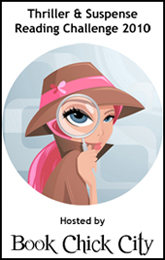

 Like
Like
 Rhodes Review: When did you first realize you wanted to be a writer?
Rhodes Review: When did you first realize you wanted to be a writer? 
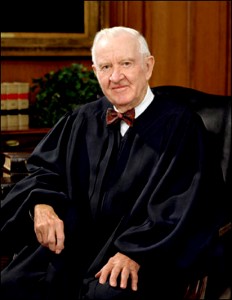 John Paul Stevens served as a Judge of the United States Court of Appeals for the Seventh Circuit from 1970-1975. President Ford nominated him as an Associate Justice of the Supreme Court, and he took his seat December 19, 1975.
John Paul Stevens served as a Judge of the United States Court of Appeals for the Seventh Circuit from 1970-1975. President Ford nominated him as an Associate Justice of the Supreme Court, and he took his seat December 19, 1975.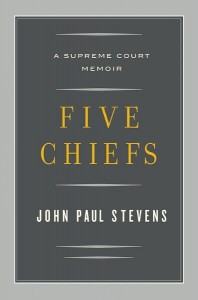
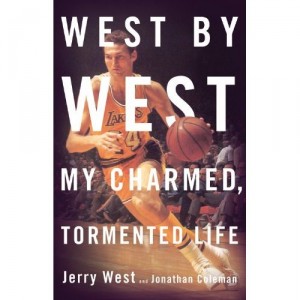
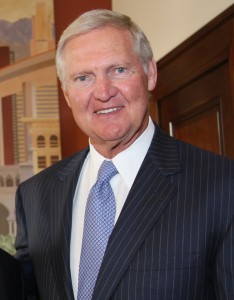
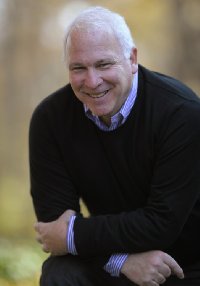

 Robert Louis Smith, author of
Robert Louis Smith, author of  Born in 1960 in Quantico, Virginia, Geof grew up on Maryland’s eastern shore, in Delaware and New Jersey, before his family permanently settled in Montreal, Quebec in 1971.
Born in 1960 in Quantico, Virginia, Geof grew up on Maryland’s eastern shore, in Delaware and New Jersey, before his family permanently settled in Montreal, Quebec in 1971.